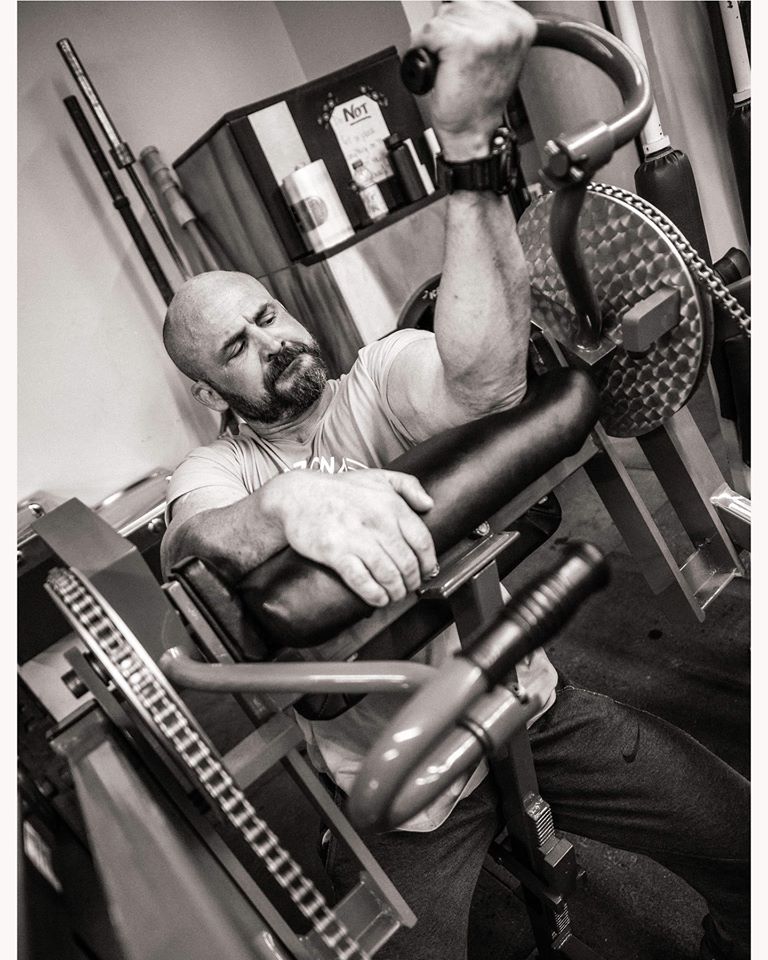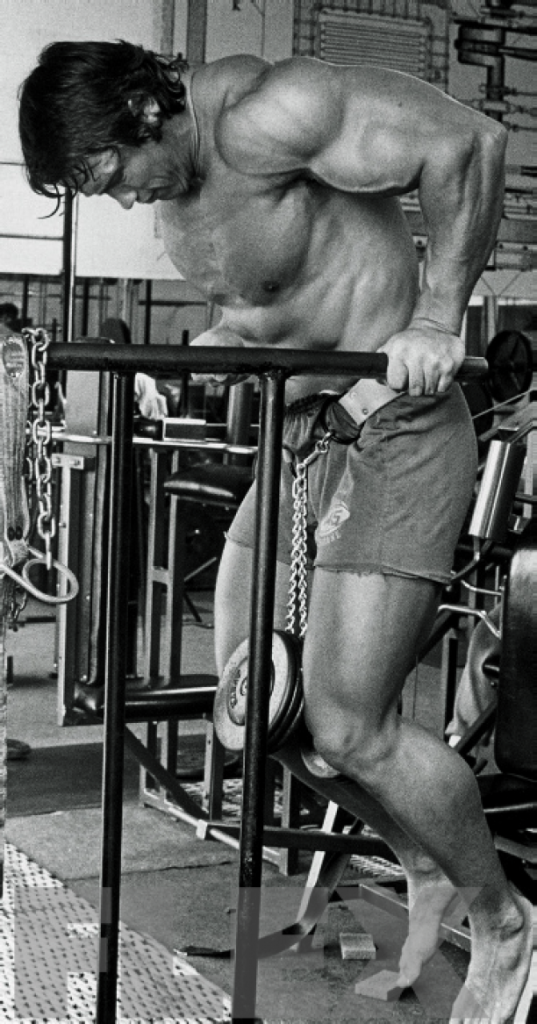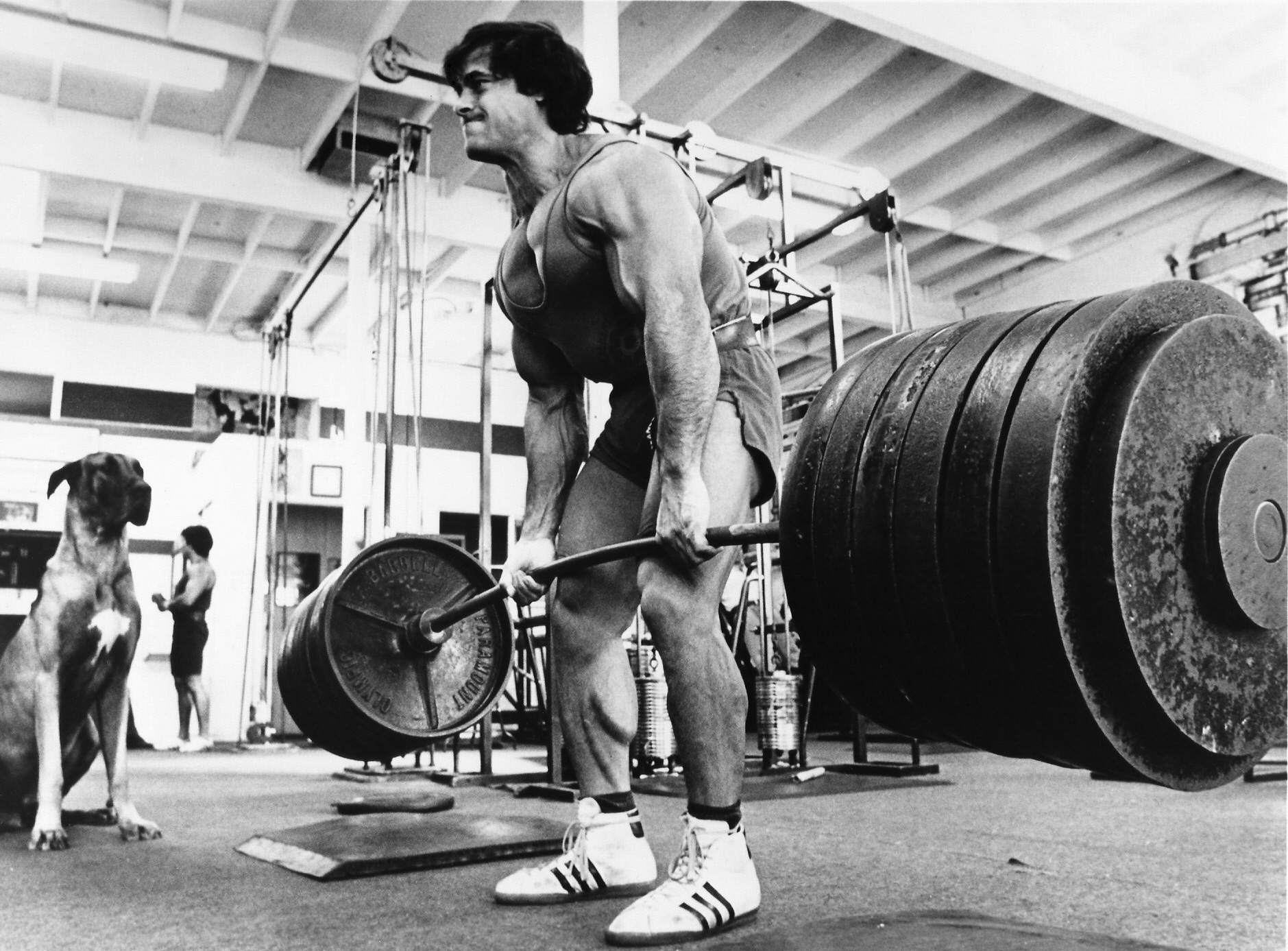In the most basic terms, Hypertrophy refers to an increase in the size of a…
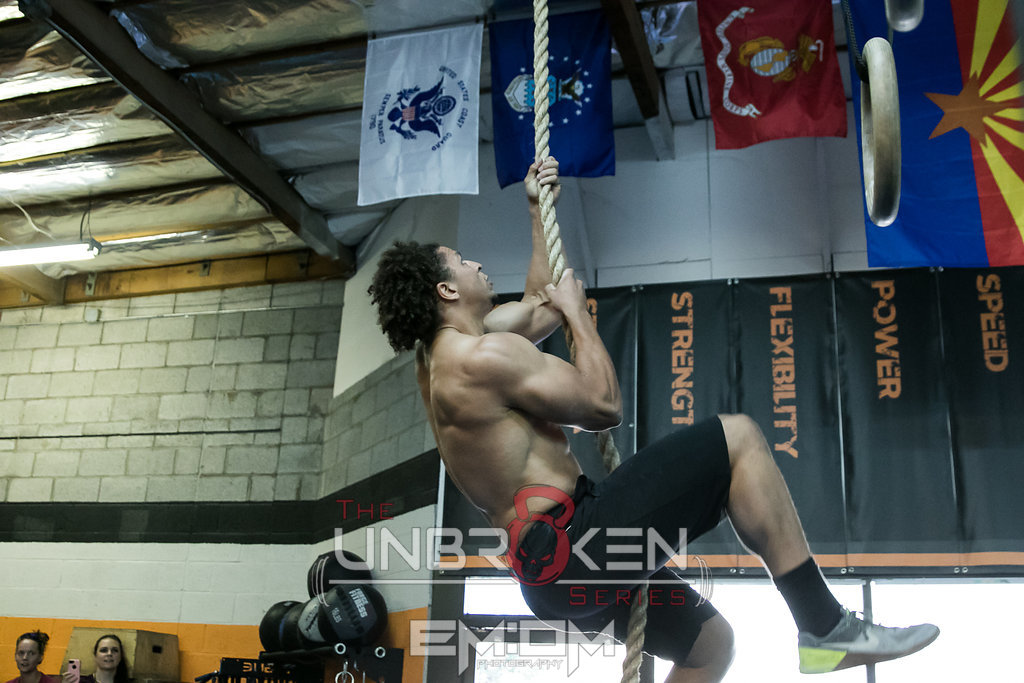
Climbing Rope
Climbing Rope
In functional fitness competitions, there are typically two types of rope climbing: with or without the aid of your legs. This article will address both styles of rope climbing and provide some guidance for training both.
The Clamp Technique
There are multiple techniques that are effective methods of ascending a rope. In the context of preparing for competition, considerations of primary importance should be speed, and efficiency (low energy cost). The Clamp Technique is one of the more effective methods of addressing these priorities.
Steps to execute The Clamp Technique as demonstrated in the video above:
1. Initiate the climb by jumping and grabbing the rope as high as possible with your hands.
2. Rock back and pull your knee (it doesn’t matter which one) up as high as possible. As you pull your knee up, allow the rope to run down the inside of your leg and over the outside of your foot.
3. Once you have rocked back, pulled your knee as high as possible and allowed the rope to drape over the outside of your foot, using the other foot, scoop the rope from underneath the foot and trap the rope against your ankle or the top of your foot. (the deeper you trap the rope, the more secure your footing will be due to increased friction).
4. Once you have trapped the rope with your feet, vertically extend your body (extend all the way so that you gain as much height as possible). As you extend, advance your hands up the rope (the hands are primarily a place holder on the rope).
5. Repeat this process until you have climbed to the desired height. Most athletes should be able to develop the ability to consistently ascend a 15′ rope in two moves.
Keep your focus on the footwork. Your hands are a distraction!
____________________________________________________________________
The Single Move Rope Climb Drill
This is an effective way to practice all the components of a rope climb without the same degree of fatigue or risk associated with full rope climbs. To complete a Single Move Rope Climb Drill, simply complete a rope climb that concludes following the first extension of the body (this should put you at least halfway up a 15’rope).
Safety
1. Start with partial ascents.
2. Do not allow the rope to accumulate on the ground. This is dangerous when the athlete descends to the ground (landing on the rope can easily cause a broken ankle).
3. It is a good idea to place a gymnastics crash pad under the rope.
Build Physical Readiness
Your current level of fitness and strength will be significant factors in determining how you approach training rope climbs. It is recommended that you develop the ability to perform strict pull-ups prior to addressing rope climbs. Developing strict pull-ups prior to practicing rope climbs will help ensure that you have adequate upper body and grip strength to safely climb a rope. In addition to pull-ups, overall development of your upper-body pulling strength is helpful. This means performing exercises such as horizontal pulls and arm curls. The next step is to start training with the rope. Rope Climbing should not be an arm dominate movement (unless performed legless), but it is helpful to have the upper body strength to accommodate for any lose of footing.
Keep Your Feet on the Ground
Grab the rope, lean back and descend the rope by making small movements with your hands, keeping your body tensed and straight. Once you reach the lowest point that you can, reverse direction and return to the upright position by climbing the rope with small movements of your hands, keeping the body tensed and straight. This exercise helps to build upper body pulling strength and grip strength.
Rope Pull-ups
You can do rope pull-ups by hanging a short length of rope or a towel over a pull-up bar. Grab each end of the rope or towel and hang. Supporting your bodyweight while hanging from a rope or towel will start building the specific grip strength required for climbing a rope. Once you have developed the ability to hang from a rope or towel, up the intensity by hanging from the rope or towel and performing pull-ups (this can also be done by hanging from the climbing rope and practicing pull-ups).
Keep Your Feet Off the Ground
This is one method of practicing the footwork for a rope climb. Set up a box next to the rope, sit down on the box, and execute the footwork for a rope climb. This allows you to practice the footwork without having to support your body weight.
_________________________________________________________________________________________
Two Easy Ways to Climb Faster (easy may not be the right word)
- Focus on your footwork: The hands are a distraction. Your feet lock you into the rope and extending your body moves you up the rope. Your hands are a placeholder.
- The descent is half the movement: The speed at which you descend the rope can have a significant cumulative effect on the time that it takes you to complete the prescribed reps. This is where the drop descent comes in. To execute a drop descent, establish a piked position (like an L-Sit). You will use your legs to pinch the rope and slow the rate of descent as you near the bottom of the rope. Learning this is a game-changer. Start practicing low on the rope and build to the desired height. A drop descent can also be executed in less technical manner (as shown in the video)
_________________________________________________________________________________
The Legless Rope Climb
As indicated by the name, legs may not be used to assist in the ascent of the rope. Legless rope climbs require substantial relative strength and muscular endurance. This is an advanced movement. Many people never develop a legless rope climb. Kipping can facilitate the movement, creating upward momentum through either swinging the legs or through forceful flexion of the hips.
Building to a Legless Rope Climb
The first requisite that should be met prior to attempting a legless rope climb is the ability to perform a rope climb with the aid of your legs. Two reasons to develop a rope climb prior to practicing legless rope climbs are, practicing rope climbs will build your skill and confidence on the rope. It is also important that you can complete a controlled descent, even in a state of fatigue. When learning to rope climb, start by climbing only part of the way up (this is the “single move drill”). The ability to maintain control on the rope is required for safety.
Build Strength with Eccentric Work
We are generally stronger in the eccentric phase (negative) of a movement than we are in the concentric phase (positive) of the same movement. A basic example of this would be to test the amount of weight that you can curl in a concentric fashion verses how much you can lower under control (eccentric phase). It is not unusual to see eccentric strength exceed concentric strength from 120-140%. For this reason, an athlete will usually be capable of lowering themselves down the rope in a legless manner before they are capable of climbing the rope without the aid of their legs.
The Eccentric Legless Rope Climb
Start by climbing the rope in a standard fashion. Upon reaching the desired height (from which you can safely descend), remove your feet from the rope and lower yourself in a controlled fashion. Practicing with pauses or moving as slowly as possible are both effective ways to build additional strength. As your ability to descend the rope without the use of your legs improves, practice descending from progressively greater heights. Make small movements with your hands.
Paused Rope Climbs
Static holds on the rope are an effective way to build strength and control on the rope.
Example
10 rounds:
Paused Rope Climb (:05 midway through descent)
(rest as needed)
This workout calls for 10 sets of 1 rope climb with a 5 second pause halfway down the rope. This can be treated as skill work, with no time component or it can be done for time. When done for time, the athlete will have the opportunity to learn their work capacity and how to effectivly pace workouts.
Legless Progression
After developing the ability to perform an eccentric legless rope climb from the overall height that you plan to ascend, start attempting legless rope climbs. Make a couple of moves up the rope and then lower yourself in a controlled manner. Progressively increase the height until you have reached the desired height.
Build Volume
You have to get lots of practice reps—not just any reps, but technically-sound, focused reps. When starting, you will probably need to keep the work at a low density (get lots of rest in between reps). Low density is usually necessary due to a lack of existing adaptation to a particular movement. Low density also allows for more focus on quality of reps. Over time, your work capacity will increase and you’ll be capable of performing work at a much higher density.
Build Strength
As mentioned above, practicing paused and eccentric legless rope climbs is an effective way to build strength and control. The next step to building strength on the rope is to add load to the movement. There are two methods that are commonly used to add load to rope climbing: wearing a weight vest or using a dip belt to hang weight from the athlete’s waist. Take a conservative approach. Start with light weight and don’t climb above heights from which you can safely drop. Over time, progressively increase the weight and volume.
When climbing rope, respect the danger associated with a fall. Never put yourself into a position that you can not safely return to the ground from. Account for the lose of strength and skill associated with fatigue.
-Bachelor of Scie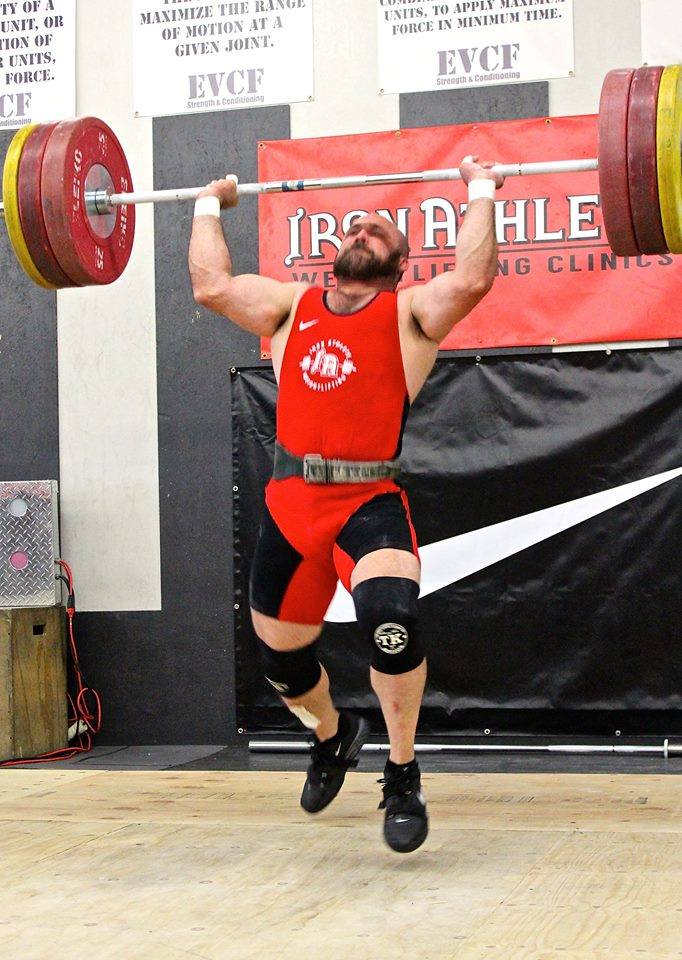 nce, Auburn University 1997
nce, Auburn University 1997
-Master of Education, Northern Arizona University 2005
-USA Weightlifting Club Coach 2001
-CrossFit Level 1 Instructor 2009
-USA Weightlifting National Coach 2012
-EVCF Regional Team Coach 2013, 2014, 2015, 2016, 2017
-EVCF CrossFit Games Team Coach 2014
-Masters National Record Holder: Snatch 130kg & Total 287kg (105kg 40-44)
-5 x American Masters Weightlifting Champion
-5 x American Masters – Best Lifter (2 x 35-39yrs, 3 x 40-44yrs)
-3 x Masters Nationals Weightlifting Runner-up
-President of Arizona Weightlifting Federation – LWC 48, 2016-current
